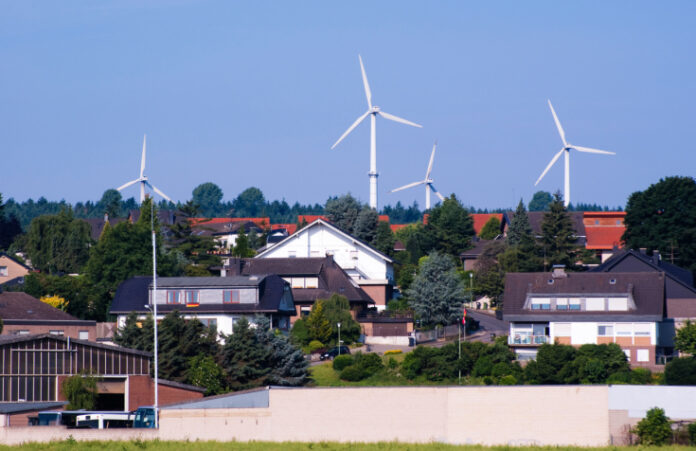Across the globe, local governments are increasingly rejecting proposals to site industrial wind and solar facilities in areas within their control.
Bans and moratoria reflect concerns local residents and elected officials have about quality-of-life issues such as “noise pollution,” landscape degradation, the impact on property values, and the economic viability of such projects in their communities.
According to the Renewable Rejection Database, which “[quantifies] the number of restrictions or rejections of solar and wind projects in the United States,” there have been 639 rejections or restrictions of these projects across the United States since 2015, with 347 of them since 2022, including 65 already in 2024.
States Reject Wind, Solar
Most recently, a 2,200-acre solar farm proposed by Entergy Louisiana in St. James Parish, Louisiana, was rejected by the Parish Council on June 18; the city councilors of Johnstown, New York, situated in the Mohawk Valley, blocked solar development from a five square mile tract of land on June 19; and on June 13 the Shawnee County (Kansas) Commission unanimously approved a one-year moratorium on solar farms and an outright ban on wind installations.
The rejection of these wind and solar facilities is not just happening in the United States, either. Canadian regulators imposed a moratorium on all industrial wind and solar developments in the province of Alberta in 2023. In addition, a proposed 10-megawatt solar project was rejected by judges in the Australian state of New South Wales earlier this year, and in England, local authorities in Cambridgeshire, Coventry, Herefordshire, Holbeach, and Kent, respectively, have all rejected plans for large-scale solar installations in 2024.
The Osage Nation, which since 2011 has been battling renewables developer Enel Green Power North America over a 150-megawatt, 84-turbine wind installation in northern Oklahoma they say was illegally placed without its consent, recently scored a major victory in federal court when a judge ruled Enel violated the Osages’ tribal sovereignty by not obtaining mining leasing rights and ordered the farm to be shut down and dismantled.
‘Effective Counterargument Is Economic’
The evidence of the harmful impact of large-scale wind and solar development on the localities where they are sited is growing, says John Droz, a physicist from North Carolina who runs the Alliance for Wise Energy Decisions.
“As time has gone on, there has been more evidence of the harmful impact of wind and solar and concerns on the local level have grown, and become much more sophisticated in their critique,” said Droz. “What’s proven to be the most effective counterargument is economic, because the economics of this issue is a net economic negative.
“It’s a net economic liability to these communities,” Droz said. “Numerous studies show that large wind power installations can reduce property values in residential property located near the farms and also cause a decline in tourism.”
Impacts on Health and Wildlife
Droz also notes there have been over 100 studies pointing to adverse health effects to local residents due to wind farms, as well as documented harm to livestock and wildlife and ecosystem destruction.
One example Droz cites is a study published in 2022 in Royal Society Open Science, a peer-reviewed journal, which showed that industrial wind and solar facilities in California are making life significantly worse for nearly half of the “vulnerable” bird species that fly over them.
According to the study, 11 of 23 bird species, including barn owls, golden eagles, roadrunners, and yellow-billed cuckoos, “were either highly or moderately vulnerable [to wind and solar farms], experiencing a greater than or equal to 20% decline in the population growth rates with the addition of up to either 1,000 or 5,000 fatalities, respectively.”
The study found the impact on bird populations extended far beyond the area where the facilities are located.
“Populations of species associated with grasslands where turbines were located were most vulnerable to wind,” the study found. “Populations of nocturnal migrant species were most vulnerable to solar, despite not typically being associated with deserts where the solar facilities we evaluated were located.
“Our findings indicate that addressing declines of North American bird populations requires consideration of the effects of renewables and other anthropogenic threats on both nearby and distant populations of vulnerable species,” the study found.
The American Bird Conservatory estimated in 2021 that, at a minimum, 681,000 birds are killed annually by wind turbines, and note that “these estimates likely underestimate the true extent of the problem due to the fact that many bird fatalities escape human detection.” (Emphasis in the original.)
Wind is not the only culprit in bird fatalities. The Ivanpah Solar Power Facility in the Mojave Desert, for example, is responsible for incinerating around 6,000 birds annually.
Tim Benson (tbenson@heartland.org) is a senior policy analyst with Heartland Impact.
For more on wind power and states, click here.
For more on solar power and wind, click here.


























